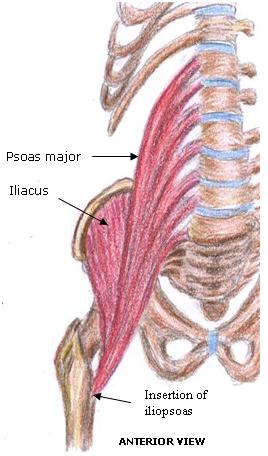Monday, January 26, 2015
Iliopsoas Muscular Tightness Directly Causing Back Pain
First off…let me say,…"hello, again.". I have taken off a long time between posts. For one,… I no longer am a chiropractor at C-F….,but I was fortunate enough and blessed enough to have the opportunity to open my own clinic called Vida Wellness Center.
Because I have had so many patients and people just browsing looking at the posts, I won't bother fiddling with the URL,…I'll continue to post here….for now before I decide to transfer everything over to my own website where everything will be all inclusive,…including these articles and reviews.
Okay,…today, I wish to speak about the Iliopsoas Muscle. I would like to say this is one of the most overlooked muscles in regards to back pain,……EVER!!!!!
Psoas Muscle is a hip and thigh flexor. Origin of the Psoas Major is the Transverse Process of T12 -L5 as well as the lateral aspects of the discs in between those corresponding vertebrae. It inserts by way of the continued Iliopsoas Muscle into the Femur bone of the Lesser Trochanter. Nerve innervation is the Lumbar Plexus vis the Anterior branches of L1-L3.
I often will find that when reviewing the patient's x-rays, the shadow of the psoas major mms. What you will also find is the the vertebrae starting to convex toward that side. Patients think it is scoliosis, but it is not. When a patient gets put on an exercise protocol of stretching out their Iliospoas muscles as well as their quadratus lumborum,…the pain will discipate within a few weeks (or less). The doctor will adjust the lumbar region in the proper manner along with the patient doing in clinic exercises and the patient quickly restores to their normal well being.
The more prevalent the shadow the tighter the iliopsoas/psoas mm are.
The path of the muscle starts as the psoas muscle and once it reaches the pelvis it becomes the iliacus ms. and then those two muscles become the iliopsoas muscle.
Whether or not the spine "slinky's" back into it's normal position depends upon the coupling dysfunction. How much did the vertebrae move and the positioning of the vertebrae. However, with complete restoration or not, the patient can STILL get out of pain. Yay!!! So, no need to panic…just combine chiropractic with your stretches and you'll be out of pain in a short manner.
Dr. G
